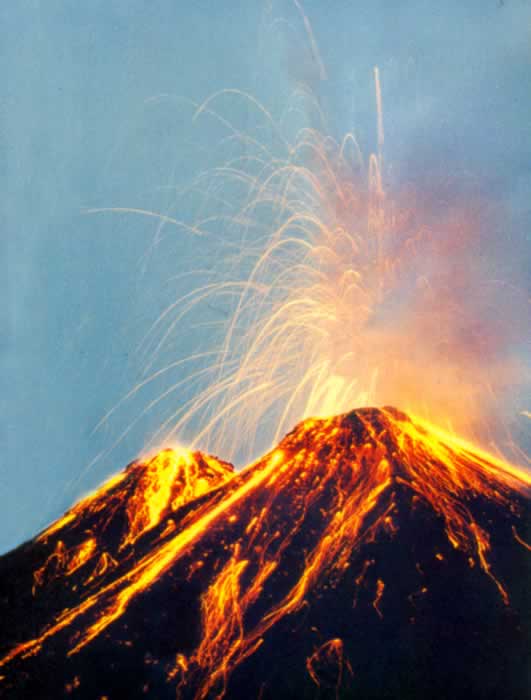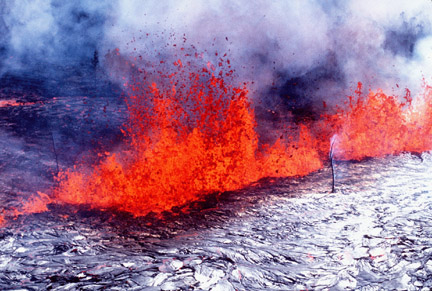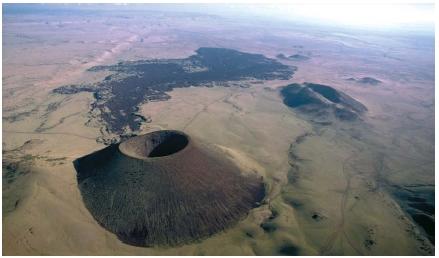 |
VOLCANOES |  |

 |
VOLCANOES |  |


Shield Volcano
These volcanoes are broad dome-shaped structures formed by basaltic lava flows. These volcano types are frequently island volcanoes. They have mostly pahoehoe flows that change to aa flows at the bottom as the lava cools.
Once mature, the lava flows through a conduit system of lava tubes. This system increases the distance traveled by the lava thus increasing the width of the volcano.
Mature shield volcanoes also have steep-walled calderas that form as the top of the volcano collapses. The large caldera forms because the central chamber magma travels through the lava tubes to feed fissure eruptions.

Lava Tube

Fissure Eruption

Cinder Cone Volcano
Relatively small at between 100 ft. and 1000 ft. this volcano type is created by the deposition of ejected pyroclastic material such as dust, ash, lapilli, and cinders. These volcanoes, on rare occasions, are capable of releasing lava from vents at their bases. Cinder cones have very steep slopes (between 30° and 40°) and large deep craters.
Cinder cone volcanoes result from a single eruption lasting weeks to years. Once the volcano stops erupting the magma hardens in the cone and the volcano never erupts again.

Composite Volcano
Composite cone volcanoes are created by alternating layers of pyroclastic flows and the lava flows seen in shield volcanoes. These large symmetrical structures are found predominantly in the Ring of Fire, the rim of the Pacific Ocean.
In general, composite volcanoes have magma in andesitic composition and are gas-rich.
Nuée ardentes or glowing avalanches are the most devastating of composite cone pyroclastic flows. These fast moving flows (up to 125 mph) are composed of hot gases infused with incandescent ash and large rock fragments.
Lahars can also be produced from composite cone volcanoes. The steep sides make them prone to mudflows along stream valleys.
Back to Volcanoes Page 3 |
Volcanoes Page 5 |
Go To Volcanoes Assignments |